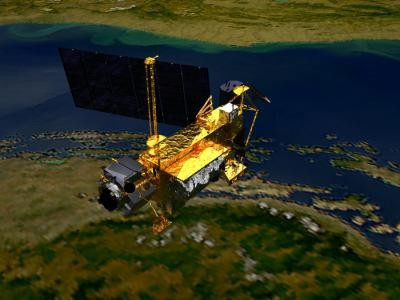NASA Satellite Has Landed; No Reports of Injury

The NASA satellite falling from space has reportedly landed in Canada, near Calgary, but nobody was hurt, according to reports.
We can now confirm that #UARS is down! reported the official NASA Twitter account. Debris fell to Earth between 11:23 p.m. EDT Friday, Sept. 23, and 1:09 a.m. EDT Sept. 24.
There have been unsubstantiated reports of debris in Canada, as reports on Twitter and other social networks suggest some of the Upper Atmosphere Research Satellite (UARS) pieces landed in Okotoks, Canada, near Calgary.
There is also video on YouTube reportedly showing falling debris, but that hasn't been confirmed. NASA is working to substantiate reports, including whether debris found in Canada is real.
But some locals in Okotoks are reporting the discovery of wreckage via social media, saying a large piece left a large crater on land.
The Upper Atmosphere Research Satellite is the biggest NASA spacecraft to make an uncontrolled crash into Earth since 1979. It came down in some 26 pieces of titanium and other hard alloy pieces, and while some are expected to have burned up in re-entry, others apparently hit land in Canada.
Reports have also been made that people from Hawaii to South Florida saw flashing pieces that looked like shooting stars as the debris made its way to Earth.
But now, people around the world who were afraid that NASA's falling UARS satellite might come crashing down upon them can rest easy. NASA confirms that it is down, and there have been no reports of injury.
NASA has not confirmed where it landed, but the agency has said re-entry occurred during a two-hour period.
There never was a big concern that NASA's falling satellite would hit a person. The odds were very modest, according to one expert.
You're way more likely to be hit by lightning than by the satellite, Jonathan McDowell of the Harvard-Smithsonian Center for Astrophysics in Cambridge, Mass. told The Wall Street Journal.
McDowell said two large Russian rocket parts fell to Earth this year and nobody noticed. He said the falling NASA satellite is getting so much attention because NASA issued a press release about the occurrence.
There is a low probability any debris that survives re-entry will land in the United States, but the possibility cannot be discounted because of this changing rate of descent, NASA said in a statement Friday.
Since most of the Earth is water, the chances of it hitting a person had odds of just 1 in 3,200.
NASA predicted that at least 26 large pieces of the defunct satellite could crash down. The biggest surviving piece was expected to be about 300 pounds.
The 6 1/2-ton NASA climate probe was launched in 1991 and shut down in 2005 after completing its mission.
Many satellites have re-entered the atmosphere and landed on Earth over the years, yet to date nobody has been injured from falling debris, experts said.
© Copyright IBTimes 2025. All rights reserved.





















